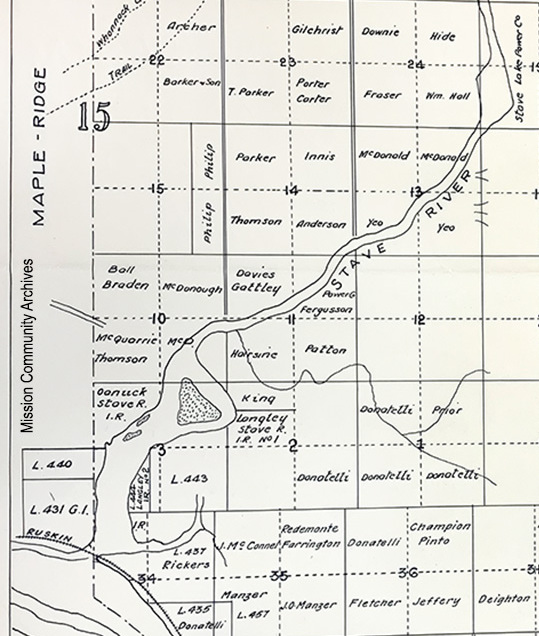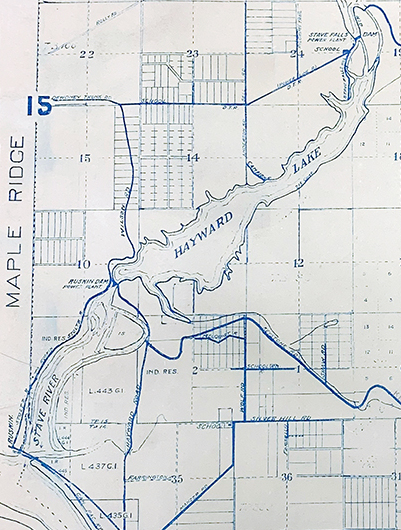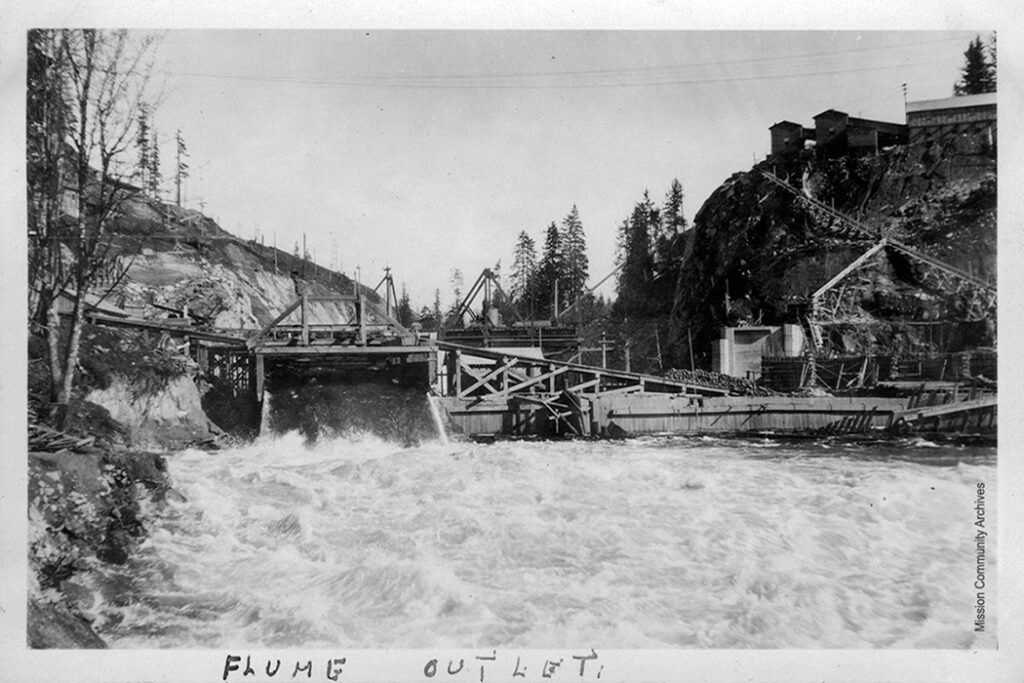
Mission’s unique geographic layout made it ripe for hydroelectric work that would see considerable investment into the region prior too, and during the early years of the Great Depression. The major project that helped supply much of the Lower Mainland’s power needs and created Hayward Lake where so many enjoyable summer days are spent at, was the construction of the Ruskin Dam. Part of a larger project dealing with multiple dam constructions at Stave Falls in 1912, Blind Slough in 1925, and Alouette in 1928 that saw the taming of the Stave River, and the dramatic change of Mission’s topography.

Pre-Dams 
Post-Dams
Ruskin Dam was a massive undertaking and the project began in December of 1928. The dam was ready for service in an astonishing 20 months. A builder reflected on the feat as a, “ Conquest of bending the rushing torrent to the will of man.” Workers at the site could find themselves in crews of 150-500 that lived together, and worked 6, and sometimes 7, days a week. The worksite itself had overhead wiring and lighting so work could be done 24/7. While these conditions may sound abhorrent, the camps actually had a good reputation compared to a lot of other project camps, let alone relief camps. Camps featured a dance hall, library, and, while a dry camp, alcohol was known to be smuggled in. The project itself was a rather high profile undertaking that attracted engineers and skilled workers that had worked with Hayward, the namesake for the lake and one of the original overseers of the project, in the past. Skilled workers came from Utah, Colorado, and Mexico to work on the project. While it had a good reputation, the work site was not free from its accidents. A story in the Fraser Valley Record from December 19th, 1929, tells the gruesome story of a man who was killed at the dam construction site after a blast sent a rock flying from a 50m cliff that crushed the man’s head and killed him instantly. The Ruskin Dam project took a tremendous amount of hard, and sometimes unsafe work, but the end result was a power supply which carries a generating capacity of 105,000 kilowatts at a cost of $7,226,000 for the original project, no small fortune for the time period.

As mentioned previously, Mission was a town heavily influenced by railways. The Ruskin building project was no different. Home to the Stave Falls Railway that could boast being Canada’s shortest railways while it operated from 1910-1945. Part of the rail line still exists and can be hiked along at the Railway trail situated near Hayward and Stave Lake. The rail featured a wide variety of vehicles using its services. Steam, electric, and gas-powered vehicles could be found riding the line at some point or another. One of the more interesting vehicles one could catch a ride on was the car whose tires had been replaced by train wheels and would take you up the track in a rather rattling ride.

Relief Camps
Relief Camps were one solution thought up to deal with the large numbers of unemployed during the Great Depression. Work camps sought to keep the single unemployed men away from population centers making trouble. Premier Pattullo would authorize four relief camps to be set up in the Fraser Valley in 1931, one of which would be located in Deroche. The work to be completed was improving the north Fraser Highway to Harrison Hot Springs. They were paid 2 dollars per day, of which 85 cents was collected as camp boarding. By 1933 the Department of National Defense took over the camps, filled them with considerably more men, upped the military presence and dropped the daily wage to 20 cents. The already desperate worked were outraged and walked out of camp in June of 1933. While eventually coerced to return, similar camp walk offs or strikes would be implemented when the men felt the conditions were not justifiable. Larger, more nationalistic relief camp grievences would surrface in 1935 when relief campers across B.C. got on trains in Vancouver for their “On-to-Ottawa” trek that would take their concerns to the capital. The trek would not make it after getting quelled in the Regina riots. We can see then that relief camps provided a very different work life than that at Ruskin Dam camps.